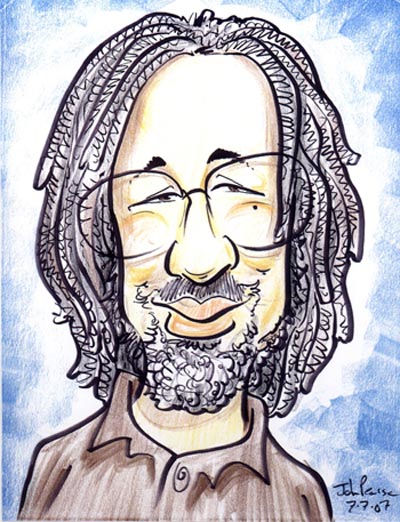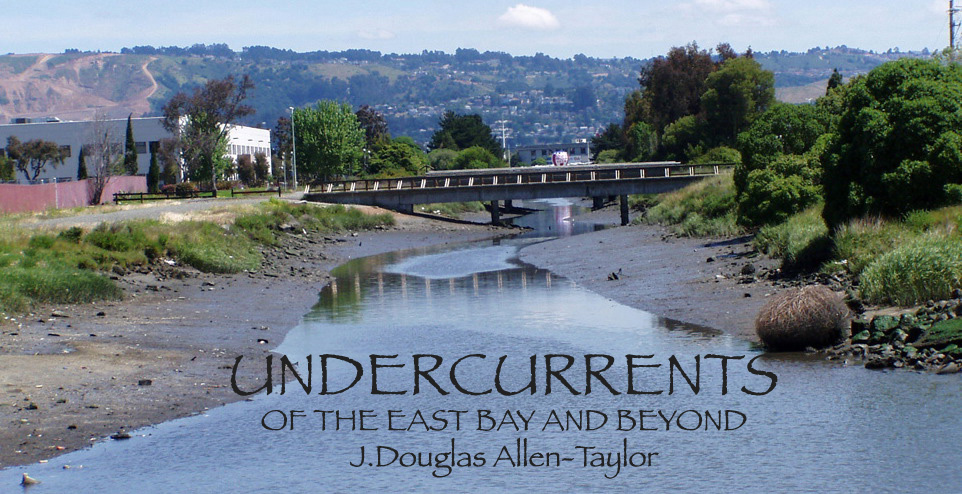|
|
MR. DELLUMS GETS DEFENSIVE ON CRIME, BUT WHY?
August 21, 2008
If the administration of Oakland Mayor Ron Dellums feels that it’s public safety accomplishments are not being fully appreciated by the public, or that it is being drawn into a silly, meaningless, back-and-forth media dialogue over crime and violence that does nothing to either calm the public’s concerns about the issue or advance the public understanding or lead us to a solution, the Dellums Administration has only itself to blame. This is a self-inflicted wound.
In recent days, Mr. Dellums has begun to sound decidedly defensive on the city’s pressing crime problems. Responding to the recent rash of street shootings and restaurant takeover robberies, the mayor told reporters on August 8 that “Oakland does not stand out here in a vacuum. Oakland is not an isolated island. And the fact that we keep talking about Oakland as if it’s some kind of crime capital of America, that is hogwash.” And again on August 13, at the city-sponsored Silence The Violence event at the Oakland Coliseum, almost plaintively: “I wish there was a silver bullet. I’d pull it out and say this is it, and in the next second we’re going to end [violence in the city]. But we know that’s not the real world.” Three days later, the Oakland Tribune announced that the mayor was inviting the vigilante group Guardian Angels to help patrol the Grand Avenue/Lakeshore Avenue area, quoting Mr. Dellums as saying that “bringing in the Guardian Angels is part of the city's comprehensive plan to provide additional security for Oakland's business corridors."
What comprehensive plan?
Under the Policy and Initiatives section of the mayor’s website, we can find only a 5 page Public Safety Summary of the mayor’s crime and violence platform and plans. It mentions nothing about calling in outside groups to patrol city streets. Nor can I remember, before this point, the mayor mentioning such a possibility as part of his public safety plans.
Couple that with the mayor’s earlier sponsorship of the police increase parcel tax initiative, and the impression one gets is of an administration without a plan at all, flailing about and reacting to events and public pressures as they come, rather than taking a long-term look at Oakland’s problems, mapping out and articulating a strategy, and then sticking to a course.
The odd thing is, the Dellums Administration seemed to have such a long-range strategy which appears to be on track and working, at least in part, but the administration seems to have suddenly lost confidence in itself and its plans.
What is the Dellums plan and platform, and where did the Dellums Administration get off course?
The mayor’s strategy is outlined, very succinctly, in the online public safety summary, reading: “Mayor Dellums’ vision to bring peace to Oakland begins by looking at the issue holistically. Mayor Dellums recognizes that the public safety problems facing Oakland did not erupt overnight. There is no quick fix to the decades of neglect that has evolved into the community conditions we face today. We must address the economic disparity and community instability facing so many residents. We’ve got to solve the root causes of crime and violence. The Mayor has outlined a four-part strategy to improve public safety: Prevention, Intervention, Enforcement, and Sustainability, called PIES. The PIES approach recognizes the need for immediate action and also the need to invest in effective programs that keep people out of the cycle of violence long term.”
The key phrase to keep in mind as we go forward with this discussion is “there is no quick fix.”
Despite the fact that he is a Marine Corps veteran—or, possibly, in part because he is a Marine Corps veteran—Mr. Dellums has never been an advocate of the police-military model of problem-solving. Instead, he has spent a political lifetime trying to solve social and economic problems by getting to the root core of those problems and dealing with the source.
Even as the chair of the House Armed Services Committee while in Congress, Mr. Dellums could concentrate his legislative efforts in that direction, so that he is best known for his support for social and civil rights causes, opposition to the war in Vietnam, and crafting the American legislative program of trade embargoes and other economic and diplomatic pressures that eventually helped bring down the apartheid regime in South Africa.
In coming back to Oakland, Mr. Dellums clearly wanted to apply the social-economic solutions strategies to his native city, particularly to the city’s enormous and nagging problems of crime and violence.
But meanwhile, citizens were getting robbed and assaulted and murdered on Oakland’s streets in numbers far too large to be ignored or considered acceptable, gang activity was growing, and drug trafficking was flourishing. When Mr. Dellums took office in January of 2007, the Oakland Police Department was functioning, but its command structure was in of a shambles (in particular, the issue of who was actually in charge, the chief or the police union), its numbers were inadequate and its deployment poorly organized, and OPD’s daily strategies and response to Oakland’s crime problems was not nearly adequate or up to the task.
And so, while he was beginning to put some of his long-term social solutions in place, Mr. Dellums spent the last year reforming and reorganizing the police department.
We have reported on that reorganization several times in the past. We tick them off again, merely as a reminder: dividing OPD’s command and deployment structure into three geographical divisions to facilitate a closer police understanding and reaction to particular community problems, winning the right in arbitration to civilianize many police positions so that more uniformed officers can be freed to get out on patrol, bringing the uniformed patrol up to full staff. The final goal has been so successful that rather than reaching 803 patrol officers by the end of the year—an ambitious Dellums promise that many, including myself, thought impossible to fulfill—the Oakland Tribune recently reported city estimates that the department will reach 832 officers by November.
By any measure, these are enormous accomplishments, and the Dellums Administration should be basking in a wave of popularity and glowing press reports.
But that hasn’t happened. Part of it is the fault of the public, which is looking unrealistically for a quick end to long-term problems. Part of it is the fault of the local media, which has often taken more delight in criticizing the Dellums Administration than in actually analyzing what is really going on. But a good portion of the problem lies with the Dellums Administration itself.
After he committed his administration to reach the full 803 police staffing by the end of the year—something which neither the Oakland City Council nor former Mayor Jerry Brown had been able to accomplish following the passage of the anti-violence Measure Y in 2004—Mr. Dellums also promised that when that goal was reached, he would convene a “community dialogue” in which we discussed how many police we needed in the future, and how they would be funded. That was, in part, a response to the Safe Streets and Neighborhoods Act folks, who were circulating petitions for a November ballot measure calling for increasing police staffing to 1075. At the January State of the City speech in January in which the 803 pledge was made, the mayor promised to convene a public safety summit to discuss further crime and violence responses.
Those were the proper responses, and the Dellums Administration should have stuck to them.
Through the spring and the summer, Mr. Dellums and anyone who speaks for his administration should have been saying, over and over, “We understand your concerns about crime and violence in Oakland. The situation is unacceptable, and we share your concerns. As an immediate response to the situation, we have instituted major reforms in the Oakland Police Department, including ensuring that there are more officers on the streets to respond to your calls, ensuring that those responses are quicker, and ensuring that police investigations are done smarter and more comprehensive. This is a major overhaul of the police department, and any major overhaul is going to take time. We know that the public’s patience in such matters is not unlimited, but we ask for your patience as we put more police on the streets.”
Meanwhile, the administration should have kept the communications channels open to make sure that the police reforms were having their desired effect.
Mr. Dellums began that process in the spring, promising to go around to the city’s various Neighborhood Crime Prevention Councils to hear feedback from community public safety activists. In this regard, the mayor spoke to the Maxwell Park NCPC and then to the Chinatown NCPC and then—unaccountably—abruptly stopped those appearances. That was a mistake, and the mayor should start back his NCPC tour immediately. And that should be just the start.
The mayor also got off track by sponsoring the police parcel tax initiative, which proposes to add 150 police to the department’s staff over a three year period. The parcel tax initiative served the mayor’s purpose by knocking the Safe Streets and Neighborhoods Act off the ballot, which was a deeply flawed and juvenile initiative that would have asked for more police but left it up to “somebody else” to figure out how to pay for them. But the mayor now seems to be using the police parcel tax initiative as a substitute for its promised substantive dialogue on police staffing or the larger summits and public discussion on public safety issues. If that is true, that would be an enormous mistake.
Most of Oakland agrees with Mr. Dellums’ balanced approach of increased police protection and advanced social and economic solutions to address the problems of crime and violence in the city. The sometimes-agonized debates over former Mayor Brown’s 2002 police tax measures, Nancy Nadel’s spring 2004 Measure R violence prevention measure, and Measure Y in fall 2004 showed how seriously residents take the subject, and how we want to get the balance right. We want more police, and more effective police. But we don’t want a police state, or an out-of-control department where officers attack citizens rather than attacking the problem. And we believe violence prevention measures—including increased social programs and economic development that brings jobs to city residents and benefits to depressed neighborhoods—is the ultimate solution.
What is needed is for the mayor to get back to his original plan on public safety, including actually developing and releasing a comprehensive plan, and carving out time for community dialogue. It was a good plan, a responsible plan. And because the mayor’s administration got a little off track does not mean it ought to now be abandoned. We had the fly-by-night, politics-of-the-day stuff with Jerry Brown. In 2006, Oakland voted for better.
|

